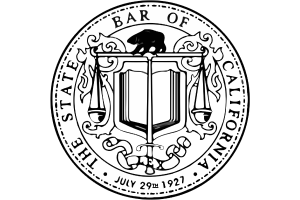- Free Consultation: 866-695-6714 Tap Here To Call Us
ROMERO MOTION EXPLAINED
In 1994, through Proposition 184, California enacted the unduly harsh Three Strikes law, which was later codified by Penal Code 667. Under the Three Strikes law, a so-called repeat offender with one or more prior violent and/or serious felonies, would receive a harsher prison sentence for a subsequent qualifying felony conviction, with a defendant with two or more such prior convictions, receiving a mandatory sentence of 25 years to life. While the Three Strikes law has been widely criticized for leading to mass incarceration and for disproportionately affecting minorities and people of color, as well as for not having a significant impact on public safety, the law is still in effect and continues to have a severe impact on the lives of thousands of defendants.
Fortunately, in 1996, in the landmark case of People v. Superior Court (Romero), the California Supreme Court gave defendants a glimpse of hope when it held that a trial court, pursuant to section 1385(a) of the California Penal Code, may, on its own, and “in furtherance of justice” strike or vacate an allegation that a defendant has been previously convicted of a serious and/or violent felony.
In that case, the defendant, Jesus Romero, was charged with possession of 0.13 grams of cocaine. The offense by itself would have resulted in up to 3 years in prison. However, the prosecutor in the case also alleged that Romero had two prior “strike” convictions for residential burglary and for an attempted residential burglary, and under the new Three Strikes law, he was facing 25 years-to-life prison sentence for simple possession of narcotics.
The trial judge in the Romero case considered such a sentence as too severe and offered to dismiss one of his strikes priors by exercising his discretion under PC 1385 to dismiss an action “in furtherance of justice.” In the end, in exchange for Romero pleading guilty, the trial judge dismissed one of his prior serious felony convictions and sentenced him to six years. Following an appeal by the prosecution, the California Supreme Court sided with the trial judge and held that the power to dismiss an action granted to a judge by PC 1385, includes the lesser power to strike an allegation or to vacate a finding relevant to sentencing that a defendant has prior felony convictions.
At the time, the California Supreme Court did stress that the court’s power to strike a prior felony conviction, while broad, is not absolute, but rather it is limited and a subject to review for abuse of discretion.
Two years after the Romero case, in People v. Williams, the California Supreme Court clarified the standards that should govern the trial court’s discretion in dismissing a strike. According to the Williams decision, when considering whether to dismiss a strike allegation a trial court should abide by the following guidelines:
- The court should consider and balance the defendant’s right to be free from cruel and unusual punishment with society’s legitimate interests in public safety and the fair prosecution of crimes;
- A court should not dismiss a strike allegation solely to accommodate judicial convenience or court congestion;
- Similarly, a court should not dismiss a strike allegation simply because a defendant pleads guilty;
- Furthermore, the dismissal should be for a reason(s) that would motivate a “reasonable judge”;
- In addition, a court should not dismiss a strike allegation solely because of the court’s personal dislike for the harsh effect that the three strikes law would have on the defendant without considering the defendant’s background, the nature of the current offense, and other “individualized considerations”;
- And a court should also consider whether, given the nature and circumstances of the present felony and past convictions, as well as the defendant’s background, character, and prospects, the defendant could be regarded to be “outside the scheme’s [three strikes law] spirit.
In addition to the above guidelines, the trial court must enter the reasons for the dismissal in an order entered on the “minutes” of the court proceedings, which basically means that the trial court has to state the reasons for dismissal in open court.
Procedurally, while a Romero Motion is usually filed after the preliminary hearing, in reality, this type of motion could be submitted at any point during the criminal proceedings, up to and at the time of a sentencing hearing. While a successful Romero motion could keep a defendant from spending life in prison, it is important to note that a judge’s dismissal of a prior “strike” felony for purposes of sentencing for a current conviction, does not make the prior felony conviction(s) disappear from a defendant’s criminal record. Therefore, if a defendant is convicted of a subsequent felony, the prior “stricken” conviction can be used to enhance a future sentence.
Still, the Romero Motion is a vital and significant tool for defendants and criminal attorneys that can be used to avoid an unjust punishment and an excessive prison term under the California Three Strikes law.
If you or a loved one has been charged with a second or third strike offense, our experienced Criminal Attorneys are here to help. At the Justice Firm, we understand the value of a solid attorney-client relationship, and are ready to work with you or your loved ones to achieve the best outcome possible.
If you want to know more about a Romero Motion or California’s Three Strikes law, or need help with any criminal manner, our highly skilled and reliable attorneys are here to help and to answer any questions you might have. You can contact our experienced California Criminal attorneys today for a case evaluation locally at (310) 914-2444 or at our Toll-Free number at (866) 695-6714, or click here.









